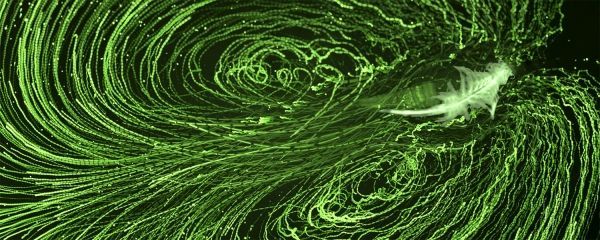Swarms of tiny oceanic organisms known collectively as zooplankton may have an outsize influence on their environment. New research at Stanford shows that clusters of centimeter-long individuals, each beating tiny feathered legs, can, in aggregate, create powerful currents that may mix water over hundreds of meters in depth.
Although the work was carried out in the lab, the finding is the first to show that migrating zooplankton – or indeed any organism – can create turbulence at a scale large enough to mix the ocean’s waters. The work could alter the way ocean scientists think about global nutrient cycles like carbon, phosphate and oxygen, or even ocean currents themselves.
“Ocean dynamics are directly connected to global climate through interactions with the atmosphere,” said John Dabiri, a professor of civil and environmental engineering and of mechanical engineering. “The fact that swimming animals could play a significant role in ocean mixing – an idea that has been almost heretical in oceanography – could therefore have consequences far beyond the immediate waters where the animals reside.”
Dabiri, who was senior author on the work published April 18 in Nature, added that the findings could also help scientists understand how the ocean sequesters carbon dioxide from the atmosphere and lead to updates in ocean climate models.
Continue reading at Stanford University.
Image via Stanford University.


